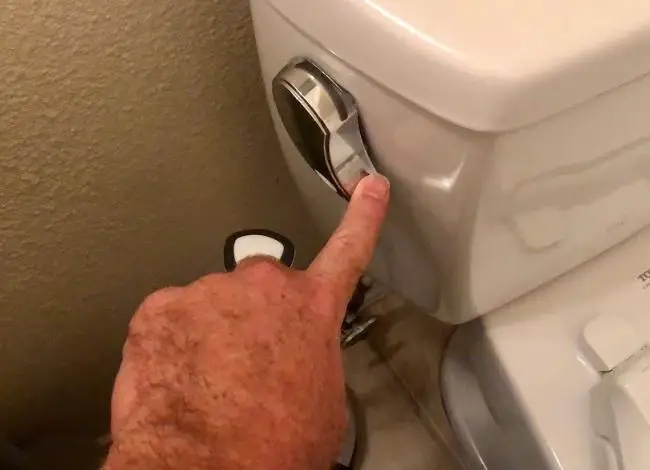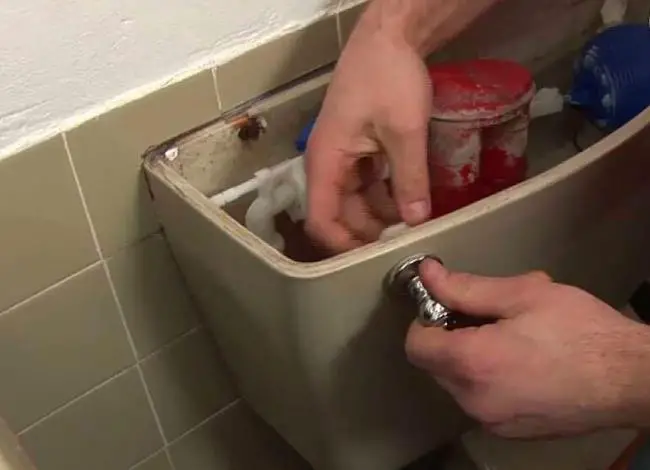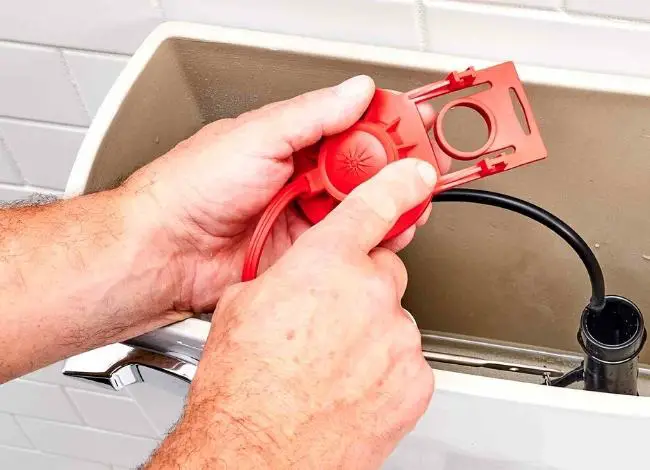What is a toilet trip lever?
The toilet trip lever is more than just a portion of the toilet. The trip lever is prominently the main portion for making successful flushing. It is a unique type of long steel handle that is attached to the toilet handle. The trip lever contains a chain that is connected to a plastic flapper. Combinedly, these parts make successful flushing happen.
How does a toilet trip lever work?
It’s all about the flushing mechanism that makes a toilet of superior quality. The more powerful the flushing mechanism, the more it suits your bathroom ambiance. I will elaborate on how the toilet trip lever works in this passage. It will become easier to understand if we discuss this with the help of a sequential hierarchy.
The working mechanism of the toilet trip lever:
Step One: Pressing the toilet handle
When you press the toilet handle, the process of flushing starts. It is not evident that all the toilets must have a toilet handle. Even some toilets have a flushing button. This button could be a single button or a dual flush button. Pressing the handle creates flickering movement in the trip lever and gets agitated.
Step two: Bolstering the trip lever
In the next step, the energy passes through the trip lever as it is attached to the toilet handle. There are many types of toilet handles, but whatever the type, the process of flushing is almost the same in all single-flushing toilets.
Step- three: Triggering the chain
After the trip lever gets agitated, it raises the steel chain attached to the other end of the trip lever. Pressing the toilet handle creates vibration in the trip lever, and as a result, the chain feels the thrashing, and it passes the energy to the next portion.
Step- Four: Opening the flapper
When the trip lever is raised, it lifts the chain. The chain also opens the flapper that is attached at the other point. When the flapper is opened, it passes water through the toilet bowl. Thus trip lever helps to initiate successful flushing. 
How to replace a broken trip lever in the toilet?
A trip lever is connected to the toilet handle, and you can say that these two parts are sold as a unit, so you do not need to buy them separately. A broken trip lever means a worthless toilet. If you have a broken trip lever, you can easily fix that within a moment.
Turning off the water supply line:
First, turn off the water supply valve so that water flow can not interrupt during the replacement process. Then perform flushing to empty the tank. Soak all the remaining water with the help of a sponge.
Taking off the tank lid:
Remove the lid of the tank smoothly and locate the broken trip lever. After you have a strip of the tank’s lid, preserve it on a safe and soft cloth or foam.
Unscrew the old trip lever:
Apply a conclusive wrench or a simple plier to remove the nut inside the tank. In the majority of toilets, the toilet handle has a left-handed thread, denoting that they turn in the opposite direction. Then rotate it clockwise to loosen it. Remove the diverse mounting nut bearing the handle in place. Finally, search for the plastic or metal mounting nut that’s holding the handle in place.
Installing a new trip lever:
Bring a new trip lever. You will find the lever, mounting nut, and rubber o-ring in the package. You can use a plier or wrench to tighten the newly installed trip lever. After decently tightening the trip lever (attached to the handle), move to the next process.
Installing the chain again:
Finally, attach the chain with the trip lever and check the flapper to see if it is in good shape. Turn on the water supply line and check if the flushing is working decently. If you find no defect, again, cover the tank with the lid. Following this detailed guide, you can easily replace a broken trip lever in the toilet.
Hi, this is Robert Crossan, the owner of this website, has 17 years of experience in the installation, maintenance, and repair of toilets and plumbing systems. After completing the Level 2 Basic Plumbing course in 2005, I started working in both domestic and commercial buildings as a professional plumber. So I can figure out the core difference between different toilet models and brands. It also helped me monitor their work performance and setbacks.